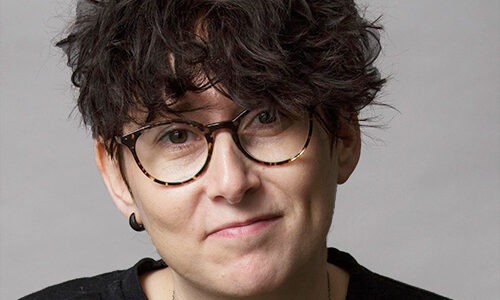by Danny Levine
 When the Ehlers-Danlos Society was relaunched as an international organization in 2016, research into the group of connective tissue disorders on which the patient organization focused was fragmented.
When the Ehlers-Danlos Society was relaunched as an international organization in 2016, research into the group of connective tissue disorders on which the patient organization focused was fragmented.
But in the five years, the organization has existed, it has helped transform the landscape through international, patient-led collaborations.
The young group’s earliest efforts were to organize the International Consortium on Ehlers-Danlos Syndromes and Hypermobility Spectrum Disorders. That brought together about 150 scientists and medical professionals to work on diagnostic criteria and management and care guidelines. It organized working groups focused on medical specialties and research interests coordinated by a steering committee with patients represented in every group.
“It’s important to include the patient voice in everything—from bench to bedside—because, without that, you don’t have the narrative of why you’re doing what you’re doing, and what the point is,” said Lara Bloom, president, and CEO of the Ehlers-Danlos Society. “Too often it’s a tick box. A paper is published, or a research study is done, a drug trial is done, and at the end of it, the patient gets to read it and say whether they think it’s okay. What is changing is that the patient is involved as a stakeholder from the very start. And that is what we push with the work that we’re doing.”
Bloom and her efforts with Ehlers-Danlos syndrome have served as a model for other patient communities. For many rare diseases, however, resources and expertise don’t currently exist. RARE-X is leveling the playing field for patient communities, researchers, and other stakeholders within the rare disease ecosystem to ensure that patient leaders have access to technology, tools, and expertise that will support their efforts, like those Bloom and the Ehlers-Danlos Society have been able to build.
In 2017, the American Journal of Medical Genetics published a special edition on Ehlers-Danlos Syndromes with 18 papers from the group with patients among the lists of co-authors. Among the most significant aspects of that work was the first effort in 20 years to update and develop an agreed-upon ontology for the group of conditions so that there was a common understanding of what defined them, the language used to describe them, and how they were classified.
But the work on the International Consortium was just a first step. In 2018, the organization launched the EDS and Related Disorders Global Registry. The registry is a collection of standardized health information provided by thousands of patients with all forms of EDS and hypermobility spectrum disorders. It allows researchers to compare and analyze patient data on a much larger scale than possible in individual research studies alone.
With the global registry in place, it allowed the Ehlers-Danlos Society to launch the Hypermobile Ehlers Danlos Genetic Evaluation, or HEDGE study, a worldwide collaborative effort devoted to finding the underlying genetic markers for hypermobile EDS, the only one of 14 subtypes of Ehlers-Danlos syndromes for which underlying genetic markers had not been identified.
The study planned to enroll 1000 participants with hypermobile Ehlers-Danlos syndrome and perform genetic sequencing on them. The data collected from the study is expected to allow researchers to take giant leaps forward in research and discovery.
“We said, okay, everyone’s working in silos to try and find the gene for hypermobile EDS, instead we could all work together, so then we had everyone sit around the table, and we created the HEDGE network,” said Bloom. “We brought about everyone who had been previously working on their own to do this together. It’s not really been done before.”
In March, Penn State College of Medicine named Bloom an academic affiliate professor of practice in patient engagement and global collaboration. “She has shown what is possible when scientists, clinicians, and patients are all gathered at the same table to work on the difficult problems involved in the Ehlers-Danlos Syndromes,” said Thomas Ma, professor, and chair of the Penn State College of Medicine, when the appointment was announced.
Bloom sees the Penn State appointment as a reflection of the growing recognition among researchers and clinicians of the value patients bring to understanding rare diseases and developing treatments.
“Patients, their experience, their value, and how much they can add is not respected in the right way, but I do see this changing,” said Bloom. “There’s a new wave in the importance of patient engagement. The very fact that the appointment has been made possible at Penn State shows that this is something that was suddenly a priority, and I’m excited and proud to be able to be lecturing on this subject.”

Stay Connected
Sign up for updates straight to your inbox.
